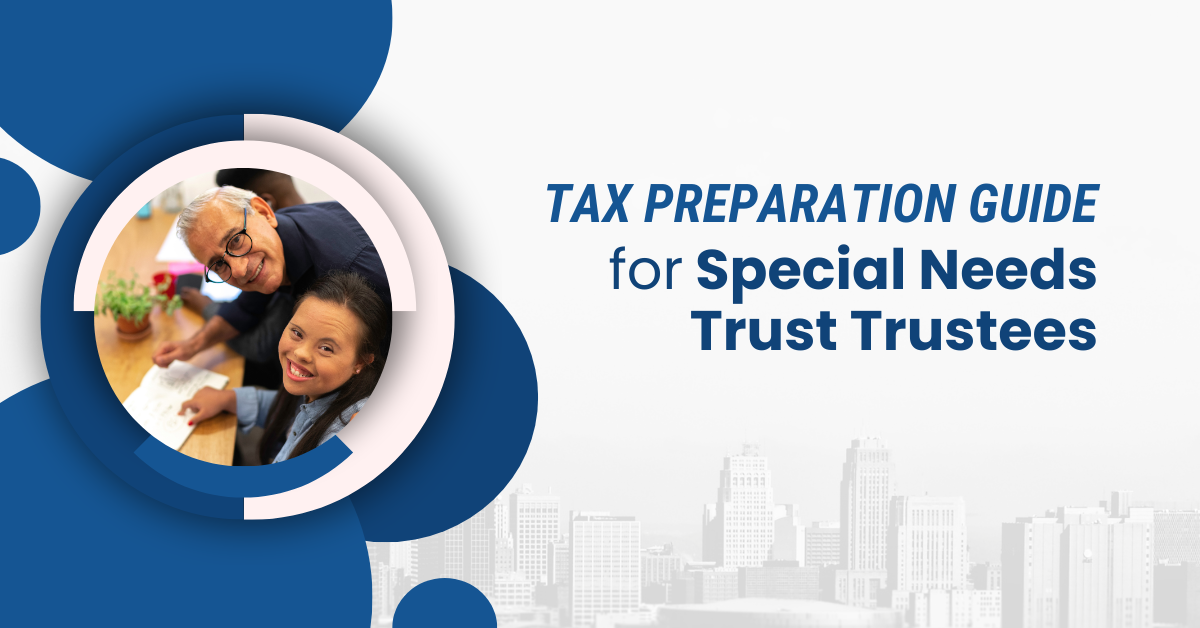Tax season can be a stressful time, especially for trustees managing Special Needs Trusts (SNTs). But having a clear understanding of the process and the necessary documentation can make it significantly easier. In this article, we will provide an in-depth guide for trustees to help them prepare for tax filing, highlighting the key differences between First-Party and Third-Party Trusts where necessary.
Trust Information:
Gathering trust information is the first step in the tax preparation process. This information includes the following:
- Master Trust Documents: These documents detail the terms and conditions of the trust, as well as any amendments. They provide your tax preparer with the essential background information needed to prepare the tax return.
- Employer Identification Number (EIN): The EIN is a unique identifier assigned by the IRS to each trust. It’s important to provide your tax preparer with the EIN for each trust you manage.
- Name Control: This is a four-character control name the IRS assigned to your trust when the trust applied for its EIN. This is required by the IRS to electronically file your 1041. The name control can be found on the second page of the Employer Identification Number Assignment letter issued to the trust after completing form SS-4. Generally, the name control is the first four characters of the trust name or the individual’s last name (e.g., Arizona Special Needs Trust would be ARIZ). Learn more about the IRS Name Control.
- Filing Type: The filing type depends on the nature of the trust. Grantor trusts treat the beneficiary as the owner of the trust assets for tax purposes, whereas non-grantor (K-1) trusts require beneficiaries to report their share of trust income on their personal tax returns
- State Tax ID Numbers: Some states require trusts to have a state-specific tax ID number. Be sure to include this information if applicable.
- Prior Year Tax Return: Your tax preparer will need the most recent tax return to help ensure continuity and accuracy.
- Date Trust Was Created: The date the trust was created is important for determining the trust’s tax filing requirements and deadlines.
Beneficiary Information:
Gathering beneficiary information is crucial for accurate tax preparation. This includes:
- Name: The beneficiary’s full legal name.
- Address: The beneficiary’s current mailing address.
- Resident State: Oftentimes, the beneficiary’s mailing address is different from their state of residence. In such cases, it is important to note this as it can affect state tax filing requirements.
- Social Security Number (SSN): The beneficiary’s SSN is used for tax reporting purposes.
- Beneficiary Statement Type: It is important to indicate the type of statement the beneficiary will receive. Grantor or Schedule K-1
- Is This Their Final Year? This information is important for tax reporting purposes, especially if the beneficiary’s interest in the trust is terminating.
Income Documents/Statements:
The trust’s income must be reported to the IRS. Necessary income documents include:
- Form 1099s: These forms report various types of income, such as interest (1099-INT), dividends (1099-DIV), retirement plan distributions (1099-R), and miscellaneous income (1099-MISC).
- Other Income Forms: Some trusts receive income from partnerships or other entities, which may require additional forms, such as Schedule K-1s.
- Pooled Trust Income Allocation: If the trust is part of a pooled trust, you’ll need to provide information on how the trust’s income is allocated among the beneficiaries. These beneficiary-specific allocations are used to determine individual distributable net income (DNI) as part of the Separate Share rule § 1.663(c)-1.
Distributions:
Properly reporting distributions is vital for both the trust and the beneficiaries. Key points to consider:
- Provide Distributions to Beneficiaries: You’ll need to provide information on all distributions made to beneficiaries during the tax year.
- Deductible Distributions: Some distributions are deductible to the trust, while others can be used to reduce the beneficiaries’ taxable income. Properly categorizing and reporting these distributions is critical.
- Accurate Categorization: Ensuring that distributions are properly categorized will help your tax preparer identify which expenditures are deductible. Improperly categorized distributions can result in higher distributable net income and potentially higher taxes for both the trust and the beneficiaries.
Read more about distributions in our Guide to Expenses, Disbursements, and Deductibles in Pooled Special Needs Trusts.
Disclaimer: The information provided in this blog post is for educational purposes only and is not intended to be construed as legal or tax advice. While we strive to provide accurate and up-to-date information, laws and regulations often change, and the application of them can vary widely based on the specific facts and circumstances involved. Therefore, you should always consult with a qualified tax advisor or legal professional before making any decisions or taking any actions based on the information provided in this blog post.

